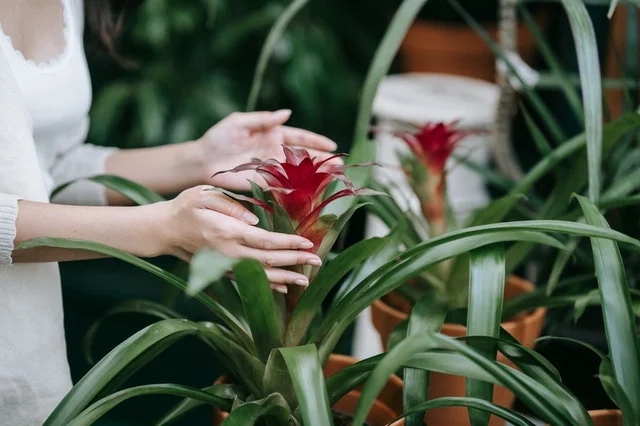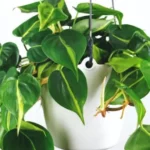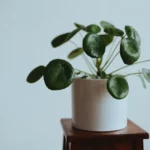Table of Contents
Planting and Growing Guzmania Plants
Guzmania flowers are strikingly colorful perennial plants from the bromeliad family. There are over 120 types of these flowers, each of which is from South America and quite unique in terms of its growth compared to other plants.
While these bromeliads may originate from one large area, they can easily be grown inside the home away from its natural habitat.
In fact, they are some of the simplest plants a person can care for throughout the year in virtually any location, as long as certain requirements are met.
Even though in their natural habitat, these beautiful flowers attach to trees and never have their roots reach the ground, growing them at home is a bit different.
It’s possible to grow them in a plant pot or a similar container. With the right care, the plant will develop, and red, orange, yellow, or purple bracts will sprout from its stem.
Propagation
While it is feasible to propagate guzmania perennials by seed, it is far more commonly done vegetatively.
This is through separating the “pups” from the mother and repotting them or transferring them to a garden. Pups should always be at least one-third of the size of the mother before being removed.
It is strongly suggested that the plant is watered 24 hours prior to this task to reduce any risk of “transplant shock”.
To successfully remove each eligible pup, the mother plant has to be taken from its pot or space in the garden.
Once the leaves are pushed back, the areas where the mother and pups are joined become visible. Using a sanitized sharp knife, this attachment can be severed with a straight or slightly slanted cut towards the larger mother plant.
For thicker attachments, a sawing motion may be required. Care must be taken not to damage the pup with the blade as this will kill it.
Once the pup or pups are removed, the mother plant can be placed back into her original spot. Any empty hole in the soil where the smaller flowers once were will need to be refilled.
A pup that has been cut with roots may be planted in the pot or garden in moist soil as is. There are two main theories when working with baby plants that have no roots attached and both have been successful in many situations.
One is to plant the perennial as if it had roots and they will eventually grow. The second is to leave the stem in water until roots start to develop.
Guzmania Bromeliad Care Requirements
To successfully help these plants develop as they should, there are some simple requirements. Each of these aspects is necessary for the well-being of the flower.
Light
Guzmanias can grow at low levels of light but being placed in a bright area tends to work better. However, it is advised to keep them out of direct sunlight.
Water
Filtered or distilled water is recommended. The water should be placed in the cup that is central to the plant, and it needs to be replaced frequently, or rotting may occur.
Soil
The soil should be kept moist, especially during warm months like the spring and summer. Plants may need to be repotted every three years for increased longevity.
Fertilizer
Utilizing a balanced fertilizer is recommended during the spring and summer. It should be added to the soil every two weeks.
However, at the end of the summer, this fertilizer is to be replaced with a slow-release form of the product.
Humidity
Guzmania plants develop better and last longer when the air is humid. In drier air, humidity can be added by spraying a fine mist around them or by using a humidifier.
Temperature
The perennials benefit from higher temperatures. It’s best to keep the air temperature around them higher than 13 degrees Celsius (55 degrees Fahrenheit).
The optimal temperatures lie between 15-30 degrees Celsius (59-86 degrees Fahrenheit). Temperatures lower than 12 degrees Celsius may result in stunted growth, yellowed leaves, and loss of flowers.
Pruning Guzmania Bromeliads
Pruning these plants is an essential part of caring for them. If the flower starts to turn brown or fade, it is time to start this process.
This can be done by removing the flowers that are dead or dying with either a sharp knife or a pair of pruning shears. Stalks to be removed should be done so as far down to the central cup as possible.
Growth and Development
Guzmania flowers usually grow up to 40 centimeters in height. The plant may take four years to mature while it often takes six years for the pups to appear.
Extra tips for Guzmania care
Common Pests and Diseases
The design of this plant gives various insects a place to settle. These little creatures include mealybugs, root mealybugs, spider mites, thrips, and scale.
These insects often thrive in the little nooks and crannies of the bromeliads as well as the underside of the leaves.
Wiping the plants thoroughly with a damp cloth can help to prevent these issues. Caregivers are recommended to look for wilting and yellowing leaves that may be a sign of infestations. If an infestation does occur, appropriate treatment is advised to begin immediately.
Unfortunately, these perennials are victims of some common illnesses as well, including leaf-spot disease, root rot, southern blight, botrytis, rust, and powdery mildew.
These diseases may be prevented or treated through the cleaning of the plant and as well as removing the infected areas.
However, the treatment often depends on the issue and its severity. Fungicides, especially the organic type, may be recommended at times, as might horticultural soap.
The faster than any of these potential problems are spotted, the easier they are to treat. Guzmania flowers can be checked frequently for pests and diseases, and cleaned on a regular basis, without causing damage as long as care is taken while doing so.
Toxicity
Individuals with pets do not have to be concerned with this plant. If large volumes of the flowers are eaten, there may be nausea and vomiting but these flowers are not known to be poisonous to people or animals.



